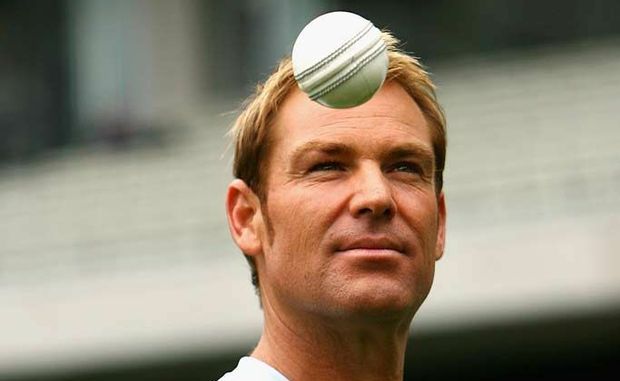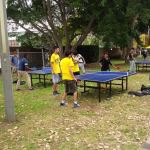As I step out onto the turf at Randwick Racecourse I wonder what the allure could possibly be on a morning like this. The track is muddy, the temperature cold and the sky still dark; it is 6am after all.
I am on my way to meet racings first lady, Gai Waterhouse, who on Saturday won her sixth Golden Slipper and equaled the record set by her late father, legendary horse trainer TJ Smith.
I enter the trainers hut in the middle of the course and spot Gai talking animatedly to her track workers, completely involved in the task at hand as if she still had something to prove.

Gai Waterhouse in action during track work at Randwick Racecourse. Photo: Laura Mitchell
The record equaling win came with unbeaten colt Vancouver who she bought at last year’s Magic Millions sale for $185,000. He wasn’t an obvious choice, she informs me, because his pedigree isn’t particularly remarkable and his build narrow. But when I suggest good training as the reason that led him to earn over $2 million in prize money, Gai is quick to respond.
“I think it’s his pure talent,” she says of the colt, now worth an estimated $20 million as a prospective stallion.
Considering the number of years she spent trying to prove herself as more than just TJ’s daughter, it’s seems fitting that she champions the notion of pure talent. Despite her own first class pedigree and all that she learnt from her father, Gai’s success is her own doing.
In his book, High Stakes: The Rise of the Waterhouse Dynasty, Paul Kennedy writes about the struggle Gai went through to make this fact known.
“The catch was: if she didn’t win Group One races she would be deemed a failure; if she won them, rival trainers would say she was still being helped by TJ the Great.”
But with every triumph, Gai’s critics continued to lose credibility until they had none at all.
“Increasingly, she was asked less frequently about her father’s influence on her career: the ultimate measure of her success.”
Having well and truly proven herself, Gai is more than happy to celebrate the role her father played in her life. After all, it was he who encouraged her to go into racing in the first place.
“Just like with any business, you come home and talk about your work with the family. For me it was with my dad over the breakfast table… He always thought I should be in racing; he was grooming me from day dot.”

Gai at the races with her father TJ Smith. Photo: Paul Kennedy
Not even a successful start in the acting world could keep Gai away from the track for long. Like so many others born into the industry, horseracing is in her blood and there was no way to quell her love for it.
“I stabbed racing and racing stabbed me,” she says.
The same can be said for her children, bookmaker Tom and fashion blogger Kate, for whom racing is a career and a passion, proving once again how strong racing runs in their blood.
By now it’s clear that there’s a power in horse racing keeping families hooked and each new generation coming back to continue their ancestors legacy; a legacy that they’ve grown up with and that has come to define them. It’s what keeps families like the Cummings’, the Freedman’s, the Hawkes’ and the Hayes’ inextricably linked with the industry.
But horse racing contributes to Gai’s identity on a personal level just as much as a familial one.
“I’m synonymous with racing. Out of all the trainers, I’m the only one known by just one name and its not Waterhouse, its Gai,” she says with pride.
When I ask what her dad would think about her newest accomplishment, she responds quietly “it would make him very proud.”
With that it’s time for her to get back to work and as I walk off the turf with the sun rising overhead, Randwick Racecourse glowing in morning light, the allure of the track finally dawns on me.
With an impeccable eye and instincts second to none, Gai Waterhouse will always be her father’s daughter and while her sixth Golden Slipper win is a tribute to him it is also a reminder of her deserved place in racing’s Hall of Fame.

Jockey Tommy Berry celebrates his Golden Slipper win on Vancouver. Photo: Mark Evans













































